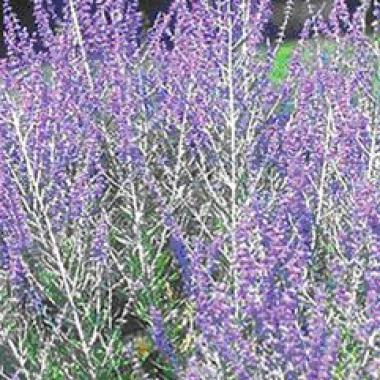


Russian Sage
Perovskia atriplicifolia

Russian sage is an easily grown and impressive herb which grows well in ordinary soil in an open sunny and airy position. The stems form a branching silver white framework which is softened by the finely cut aromatic foliage. This is a great plant to extend the flowering season in the garden.
The bright violet-blue spires of flowers are formed from August into October creating a beautiful blue haze, and are very attractive to bees — a good pollen source later in the year.
Despite its name it originates, not from Russia, but from a huge area of Asia stretching from Iran down to India. It is named after a Russian general who led his troops down into Afghanistan in 1837, and his soldiers may well have used the herb medicinally to treat fevers, as is still done locally in the present day.
Perovskia looks great planted in swathes in the border with Lavenders, Artemesias and Salvias — either the herby purple sage or flowering varieties. Try planting alongside a path where the fragrance of the foliage can be really appreciated.
For winter effects trim away the spent flower spikes in late autumn but leave the stiff silvery skeleton — several plants grouped together en masse will gleam in the winter sunlight.
To enhance this winter effect try planting in front of red stemmed dogwoods — Cornus alba 'Elegantissima' whose cream and green foliage will also flatter the flowers in autumn.
Pruning is best carried out in early to mid April each year, cutting back to new shoots near the base helps to keep the plant compact.